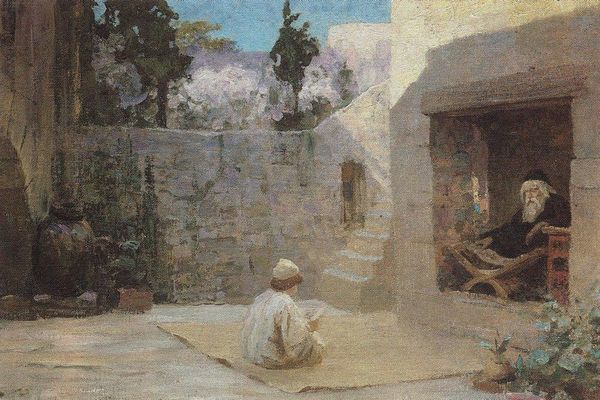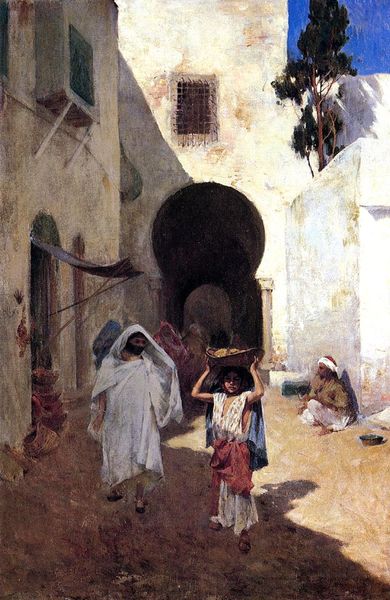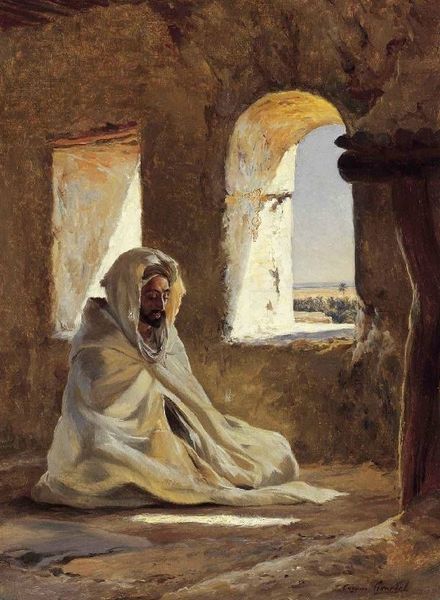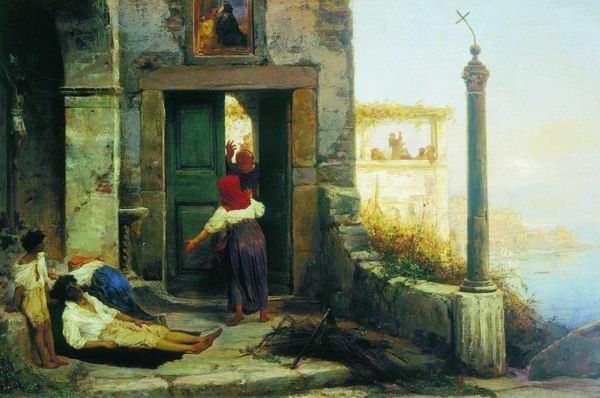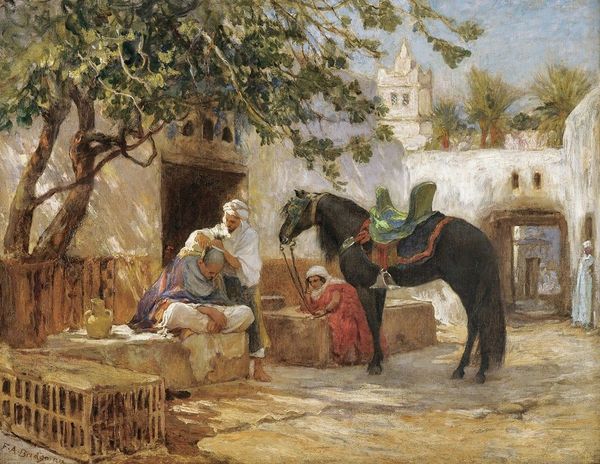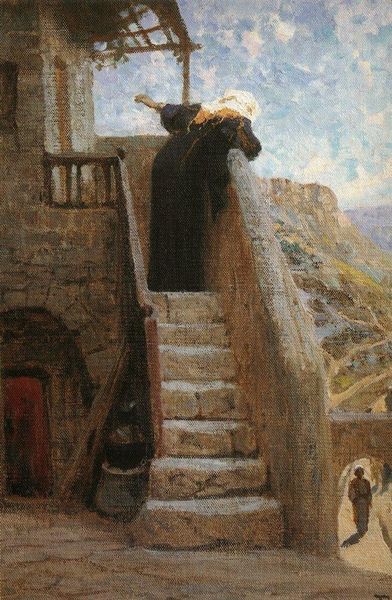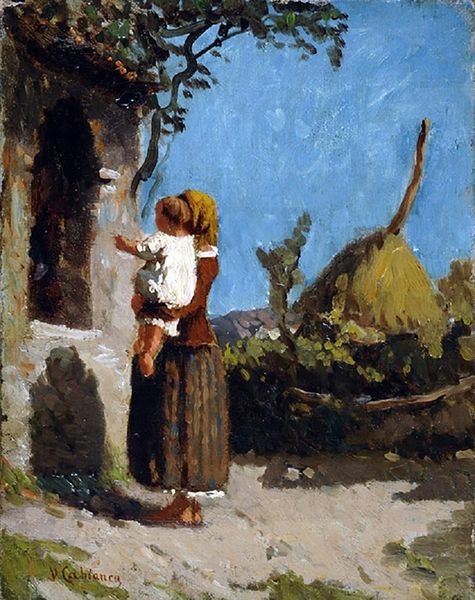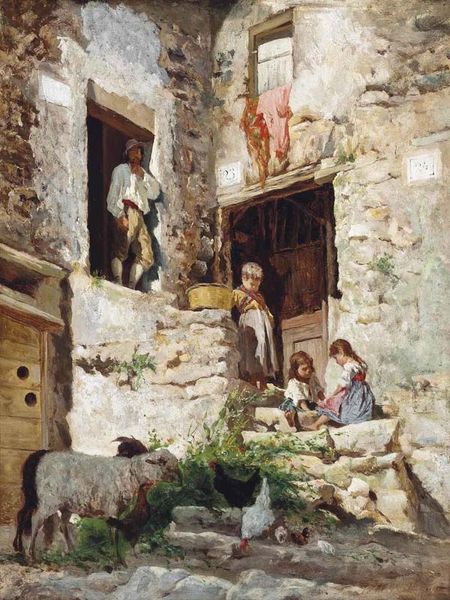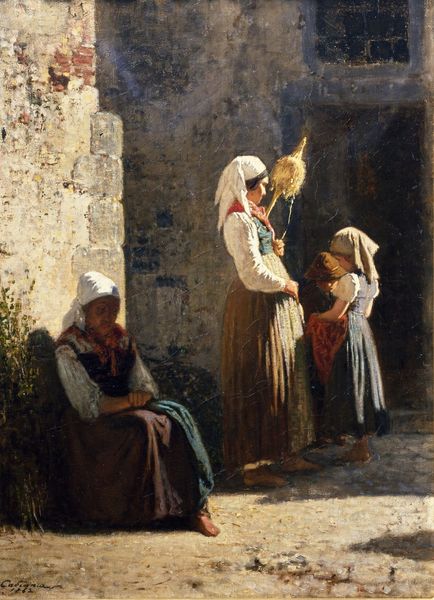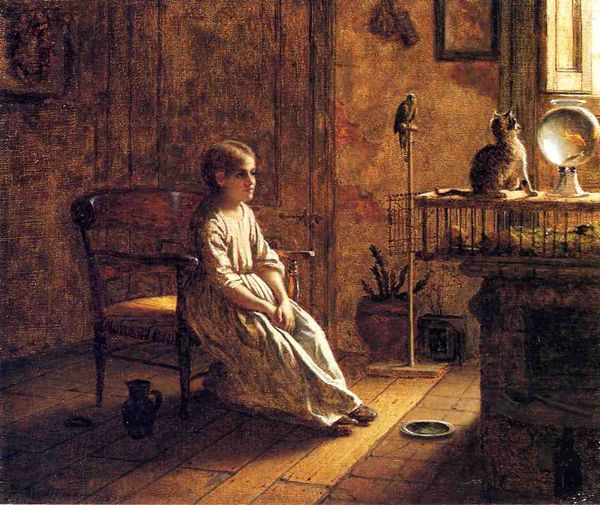
Copyright: Public domain
Editor: "Was Filled With Wisdom," an oil painting by Vasily Polenov created around 1900. There’s a real sense of serenity and contemplation, with the figures bathed in this really interesting light. What strikes you when you look at this piece? Curator: The composition, certainly. Notice how the light functions not merely to illuminate, but to structure the visual field. It draws the eye, creating a series of planes and volumes. Polenov directs light like a tangible element to model form. What do you notice about how the figures interact spatially? Editor: Well, the positioning definitely emphasizes the relationship between the two figures, placing the elder man in shadow, the child more in the light, perhaps highlighting their differing positions on the path to "wisdom?" It almost reads as an allegorical landscape… Curator: Precisely. And consider the materiality: the rough canvas texture and the brushwork. Observe how Polenov utilizes the very medium of oil paint, applying it with varying degrees of impasto to create a haptic experience. It’s less about a photographic likeness, and more about presenting the essence of the scene. Are there any textures that stand out for you? Editor: I think the contrast between the smoother application on the child's face compared to the more textural rendition of the walls is particularly compelling. That adds another dimension to their positioning. Curator: Indeed. Polenov gives us a formalist investigation into form and light. By directing light as the main expressive device and simplifying his forms and textures, it reveals itself to the viewer not as a representational exercise, but rather as a study in contrasting volumes and varying intensity. Editor: I see. So, looking beyond just the subject matter to understand the relationships *between* the light, color and texture helps us decode the entire artwork. Thanks for pointing out these nuances. Curator: Precisely, it enriches one’s understanding and reveals the essence of what makes that painting "good" or worthy of deeper consideration beyond just the representational.
Comments
No comments
Be the first to comment and join the conversation on the ultimate creative platform.
